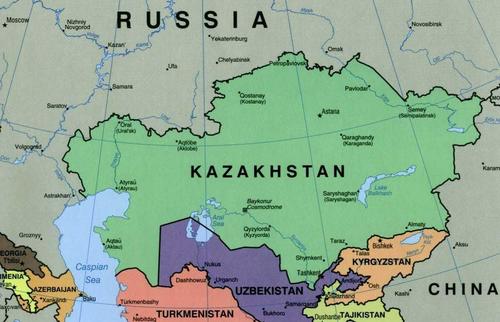Geopolitical commentator Clint Ehrlich has reported while on the ground in Moscow that “the situation in Kazakhstan is a much bigger deal than Western media is letting on.” He further argues that the mayhem unleashed this past week and ongoing violent destabilization significantly increases the risk of NATO-Russia conflict.
He asks the key question: what really is happening in Kazakhstan? After all, he writes “In America, the situation in Kazakhstan is a small news item” but it remains that “in Moscow, it is currently receiving 24/7 news coverage, like it’s an apocalyptic threat to Russia’s security. I’ve had the TV on here while writing this thread, and Kazakhstan has been on the entire time.” Below is Ehrlich’s mega-thread from Twitter exploring the crisis and connecting the dots in terms of why this is a bigger deal than many believe…

Mass protests and anti-government violence have left dozens dead. Russia is deploying 3,000 paratroopers after Kazakh security forces were overrun. The largest city, Almaty, looks like a warzone. To appreciate why Russia is willing to deploy troops to Kazakhstan, it’s critical to understand the depth of Russia’s vital national interests inside the country. This isn’t just any former Soviet republic. It’s almost as important to Russia as Belarus or Ukraine.
First, Russia and Kazakhstan have the largest continuous land border on planet earth. If Kazakhstan destabilizes, a significant fraction of the country’s 19 million residents could become refugees streaming across the border. Russia is not willing to let that happen.
Second, roughly one-quarter of the population of Kazakhstan is ethnic Russians. Kazakh nationalists are overwhelmingly Muslims, who resent the Orthodox-Christian Russian minority. Russia believes that civil war would entail a non-trivial risk of anti-Russian ethnic cleansing.
Third, the Baikonur Cosmodrome in Kazakhstan was the heart of the Soviet space program. Russia still uses it as its primary space-launch facility. The Vostochny Cosmodrome in Russia’s Far East will lessen that dependence, but it still isn’t complete.

Fourth, Russia conducts its Anti-Ballistic Missile testing at the Sary-Shagan test site within Kazakhstan. This is where ongoing development of the S-550 ABM system is occurring, one of the foundations of Russia’s national security.
Fifth, Russia’s nuclear fuel cycle is intimately linked to Kazakhstan. Russian-backed Uranium mining operations are active in the country. Uranium from Kazakhstan is enriched in Novouralsk, Russia and then returned to Kazakhstan for use in Chinese nuclear-fuel assemblies.
Collectively, these security interests make Kazakhstan a region that Russia is willing to stabilize with force. The 3,000 troops it has already committed are not the maximum it is willing to deploy. If necessary, these will only be the first wave of RU forces in the country. The biggest question is how the situation in Kazakhstan will affect the existing standoff between Russia and NATO over Ukraine. Will Russia be deterred from intervention in Ukraine by the need to maintain reserves to deploy to Kazakhstan? Or will it simply be provoked?
Recall that, before things escalated in Kazakhstan, Russia had massed troops along its border with Ukraine. Moscow issued an ultimatum: Provide security guarantees that Ukraine would not join NATO “or else.” This was already a very dangerous situation. NATO-Russia talks to resolve the crisis in Ukraine were set to begin next week. Yet, on their eve, the revolution against the government of Kazakhstan began. Russia perceives this to be an act of “hybrid war.” Right or wrong, that perception is fueling a desire for revenge.
What is “hybrid war”? From the Russian perspective, it is a two-pronged approach to regime change. First, Western-backed NGOs encourage large protests against an incumbent government. Second, armed provocateurs use the protests as cover to stage kinetic attacks.
Moscow believes that this playbook was employed successfully in Ukraine to oust the Russian-aligned government in 2014. And it believes that the West unsuccessfully attempted to employ the same strategy to topple Russia’s allies in Syria and Belarus. It’s debatable whether the West has anywhere near the power to spark revolutions that Russia contends. Yet America plays into Russian paranoia by funding “civil society” NGOs overseas.



